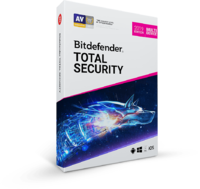I have downloaded the Transport utility as per Humax Blog. What do I do with it? I can put it on a pen drive then what? Assistance please.
My Humax Forum » Freesat HD » FOXSAT HDR
Transport Stream convert utility
(13 posts)-
| Sat 10 Mar 2012 11:17:22 #1 |
-
Can you enlighten us a bit more. What Transport Utility ?
| Sat 10 Mar 2012 15:52:56 #2 | -
grahamlthompson - 6 hours ago »
Can you enlighten us a bit more. What Transport Utility ?http://myhumax.org/wiki/index.php/Editing_SD_Recordings_and_Creating_DVD_Video
| Sat 10 Mar 2012 22:14:47 #3 | -
Sorry. "The transport stream is wrapped in a BDAV containter file (.m2ts) and will not be able to be processed by regular video editors which have not been programmed to deal with this format. We can convert the .m2ts format into the plain .ts format with a little command line utility program: m2ts-rip. This utility can be downloaded here: http://myhumax.org/blog/?page_id=314" This is what I meant.
| Sun 11 Mar 2012 7:30:35 #4 | -
Nessie,
I assume you are editing video. The HDR saves files in a certain format which most video editing software doesn't read.
The utility allows you to convert a file recorded on the HDR to a different more common format that is more readily understood by common video editing software.
You upload the HDR file to your PC and then run the utility on the HDR file.
The resultant output will be second file in another format. You can then take this file and manipulate it with your video editor.
HTH
Dino
| Sun 11 Mar 2012 8:26:34 #5 | -
All the video editing packages I have will work with the .ts files from a Foxsat-hdr
Not Free
Nero Vision, VideoredoTVsuite, Sony Vegas Movie Studio, Magix Movie Edit Pro
Free
TSmuxergui, Windows Live Movie Maker and a host of free conversion packages.
A command line utility requires you to open a command window (DOS) and type a series of commands after running the programme.
/? Usually lists the commands that it uses.
| Sun 11 Mar 2012 9:58:58 #6 | -
That's an excellent point. It may well be that the OP doesn't really need the utility.
| Sun 11 Mar 2012 10:48:33 #7 | -
Thank you both very much. I presume I use DVDflick first then edit. I am at last getting somewhere putting programs onto DVD for archiving.
You are very kind to help learners like me.| Sun 11 Mar 2012 11:51:16 #8 | -
Nessie,
I think the instructions you are following may be old and possibly incomplete as you have noticed. DVD Flick is a DVD authoring package.
I'm still not quite sure what you are trying to do.
I've not done any DVD authoring for a couple of years or so, but when I did, it was a multi-stage process and I remember having to convert the HDR files first using a command line utility, then editing them to remove adverts using an HDTV to MPEG2 process and then using DVD Flick to burn the files as DVDs.
I was intending to use this to archive programs to DVD, but it was complicated back then and the result didn't (to me) justify the effort. It was easier to buy a big disk and when that got full, use the network facility to archive programs to external storage.
Things have moved on since then and as grahamlthompson said, there are software packages which can do a more complete job of producing DVDs.
Have you read the son_t article 'Converting your PVR recordings to DVD' on this site.
http://myhumax.org/blog/?p=364
If you are trying to make a physical DVD from an HDR, that would be a good start.
Dino.
| Sun 11 Mar 2012 12:30:29 #9 | -
Edit your files first to remove ads and top and tail any content you don't want. Videoredo is superb for this. Each file will become a title on your DVD accessed by a menu.
Videoredo TV Suite combines the editing and DVD authoring into a single user friendly package and is very fast as it only recodes at edit points.
Trial version
http://www.videoredo.com/en/Download.htm
The h264 version will edit HD recordings made without encryption using non-freesat mode. About an hour of HD can be burnt to a DVD blank using the AVCHD codec, but you need a blu-ray player to play these back.
Then use a DVD Authoring package to create the DVD.
DVD Flick is a free DVD Authoring package
Normally these give you a choice of burning directly to disc, creating a DVD image file (normally .iso) or a DVD folder. You can burn the latter two to a DVD blank using IMgburn (Free).
Using this you can mount an iso image so it plays back on a PC just like a DVD disc (handy for checking before burning) or to store lots of DVD's on a usb drive you can play back on a PC
| Sun 11 Mar 2012 12:42:32 #10 |
Reply »
You must log in to post.


